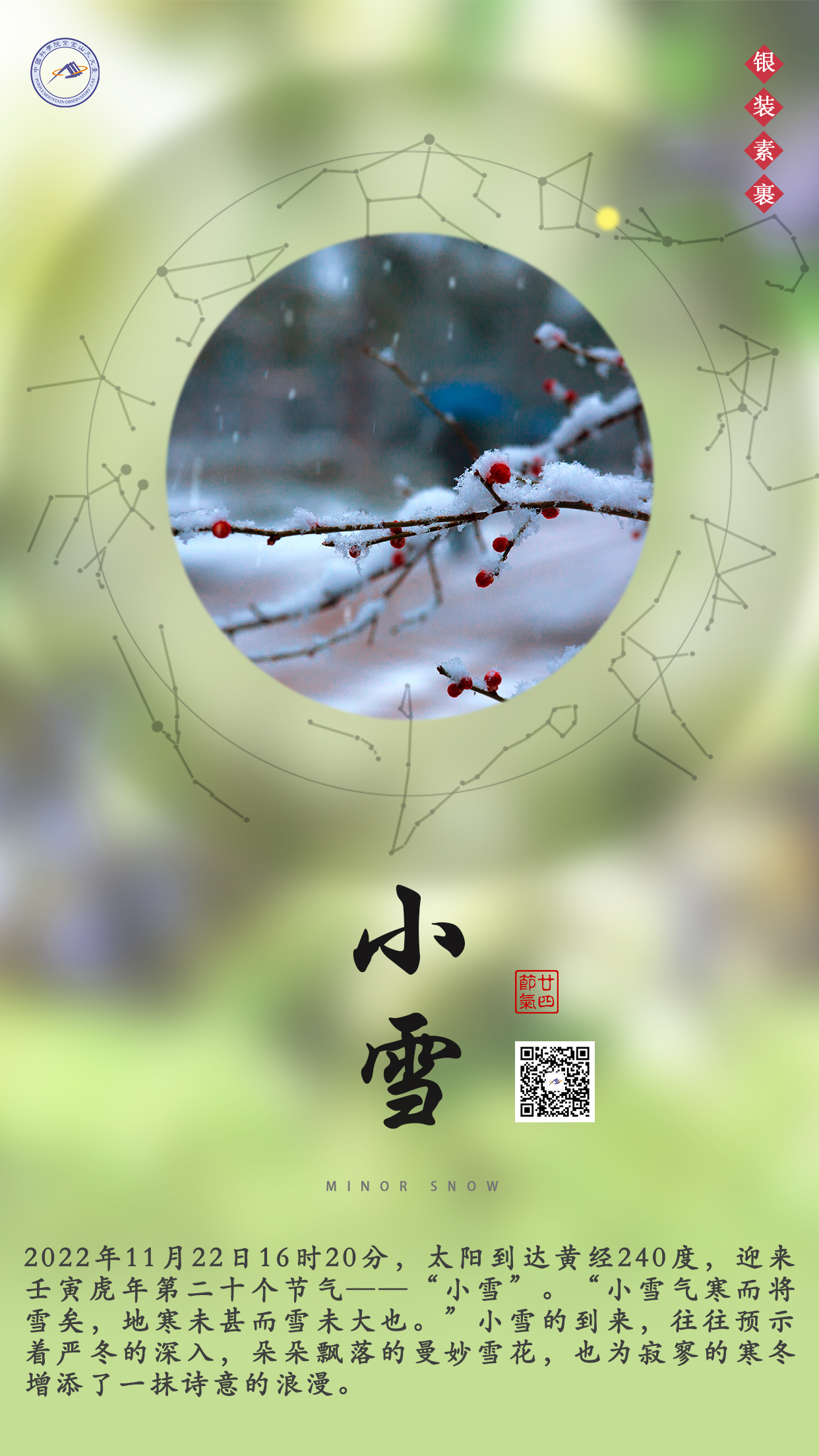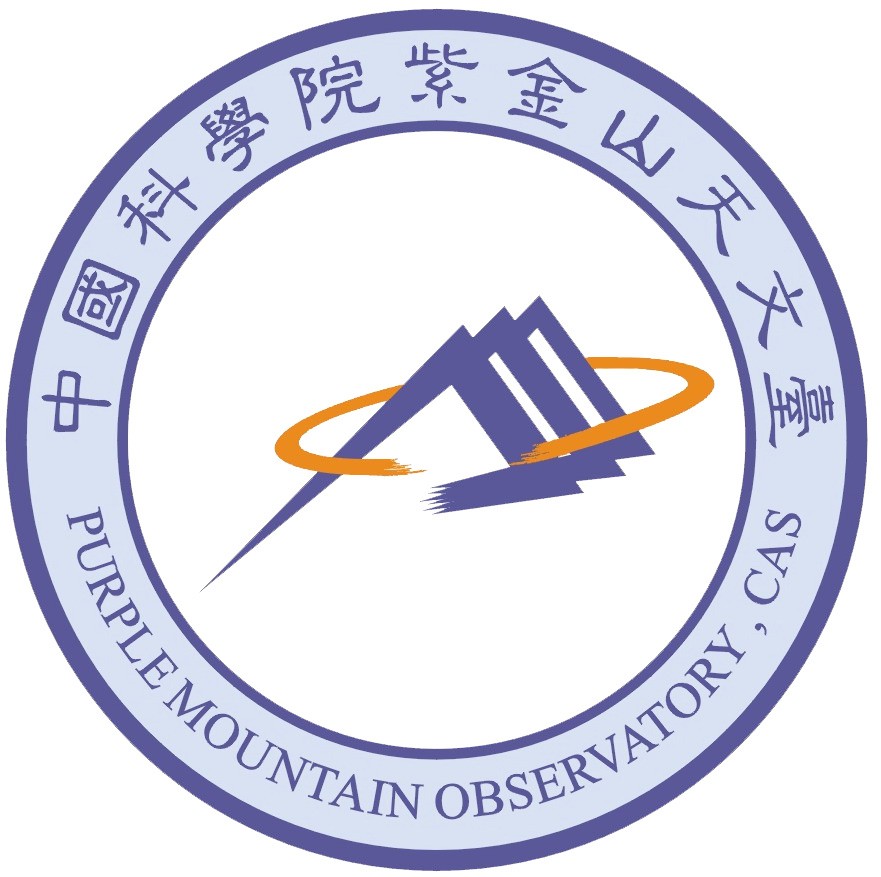“花雪随风不厌看,更多还肯失林峦。”《中国天文年历》显示,11月22日16时20分迎来2022年“小雪”节气。

天象预报
小雪——大雪
太阳
从天蝎座运行至黄道所在的第13个星座——蛇夫座。目前太阳活动性不强,太阳正面有数群小黑子,可通过带减光的望远镜观测。
月亮
11月30日上弦月,傍晚可见半圆形的月球恰好位于南方。
水星
由天蝎座穿过蛇夫座顺行至人马座。与太阳的角距离逐渐拉大,11月23日,水星合金星,日落后可在开阔地带用望远镜尝试观测。
金星
由天蝎座穿过蛇夫座顺行至人马座。与太阳的角距离逐渐拉大,日落后可在开阔地带用望远镜尝试观测。
火星
在金牛座逆行。火星已接近冲日,进入一年中观测条件最好的时期,夜晚6时左右升起,黎明前都可以观测。
木星
在双鱼座,11月24日木星留,之后由逆行转为顺行。傍晚,明亮的木星位于东南方夜空,黎明前从西方落下。
土星
在摩羯座顺行。入夜位于南方天空,前半夜可以观测。
小知识
金星在夜空中的亮度仅次于月亮,最大亮度可达-4.9等。金星在中国古代被称作“太白”,由于是内行星,金星总是出现在太阳两侧,最大角距离约为48°,金星在黎明前出现在东方时被叫做“启明星”,黄昏时出现在西方时又被称为“长庚星”。

金星是距离太阳第二近的行星,公转周期约224.3天,轨道半长轴约为1.082亿千米(0.723天文单位),金星的绕日公转轨道非常接近圆形,偏心率仅为0.0068,是八大行星中最小的。金星的自转也是太阳系行星中最慢的,自转一周大约需要243天,并且是逆行的,自东向西转动(地球是自西向东转动)。但是自转和公转两个效应的叠加使得金星上的一个昼夜长度约为116.75天。
金星是类地行星,与地球堪称“姊妹星”,它的平均半径为6052千米,是地球的0.95倍;质量是地球的0.82倍;平均密度为5.24g/cm3(地球5.52g/cm3),表面加速度为8.87m/s2,与地球都比较接近。但是金星表面的大气压是地球的九十多倍,96%以上都是二氧化碳,并布满了硫酸等物质形成的浓雾,强烈的温室效应使得金星表面的温度达460℃之多,对生命来说是严酷的禁地。
The Minor Snow
The twentieth solar term of 2022 , Minor Snow (Xiaoxue in Chinese), falls on November 22nd at 16:20, when the longitude of the Sun reaches 240º. The Minor Snow marks the deepening of winter. From this point, snowflakes might be seen dancing in the air, adding a sense of poetic romance to the harsh winter.
Astronomical Forecast
Minor Snow —— Major Snow
⊙
The Sun
✦
The Sun travels from Scorpio to the thirteenth constellation on the zodiac: Ophiuchus. Currently, solar activity is low, with a few groups of sunspots on its surface. They can be observed through a telescope with a solar filter.
☽
The Moon
✦
The Moon is at first quarter on Nov. 30th. At dusk, a semicircular moon is located in the south.
☿
Mercury
✦
Mercury travels in prograde motion from Scorpio to Sagittarius via Ophiuchus. Its angular distance to the Sun continues to increase. On Nov. 23rd, Mercury is at conjunction with the Venus. They can be observed after sunset in an open area.
♀
Venus
✦
Venus travels from Scorpio to Sagittarius via Ophiuchus in prograde motion. Its angular distance to the Sun continues to increase and can be observed after sunset in an open area.
♂
Mars
✦
Mars travels in retrograde motion in Taurus. Mars is now near opposition, and in the best time of the year to observe. It rises at 6 p.m., and remains observable until dawn.
♃
Jupiter
✦
Jupiter travels in Pisces. It is stationary on Nov. 24th, after which, it changes from retrograde motion to prograde motion. At dusk, the bright Jupiter appears in the southeastern sky. It falls in the western sky before dawn.
♄
Saturn
✦
Saturn travels in prograde motion in Capricornus. It appears in the southern sky at nightfall and can be observed in the earlier portion of the night.
轮值主编:朱听雷
制作、编辑:王科超
英文版设计:朱曼清
(金陵中学)ZHU manqing
来源: 紫金山天文台


 科普中国公众号
科普中国公众号
 科普中国微博
科普中国微博

 帮助
帮助
 紫金山天文台
紫金山天文台 